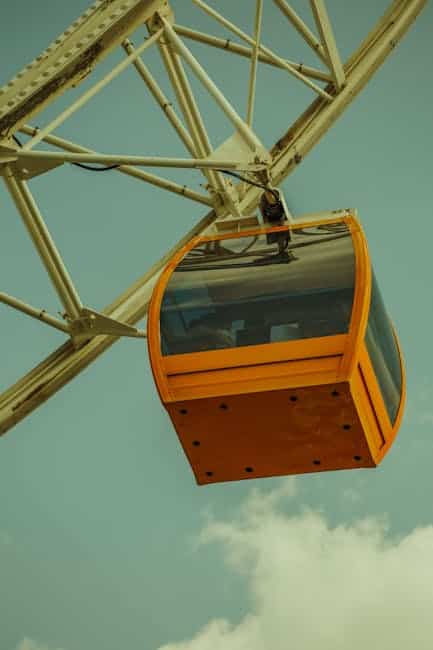The Influence of Chicago’s 1893 World’s Fair on Modern Architecture
The 1893 World’s Fair in Chicago, officially known as the World’s Columbian Exposition, was a landmark event that not only showcased advancements in technology and culture but also left an indelible mark on the world of architecture. This magnificent event, held to celebrate the 400th anniversary of Christopher Columbus’s arrival in the New World, brought together architects, designers, and visionaries who shaped the future of architectural design. Join me as we explore how this pivotal event influenced modern architecture and continues to inspire architects today.
Table of Contents
1. Introduction to the 1893 World’s Fair
2. The Architectural Marvels of the Fair
3. The Birth of the City Beautiful Movement
4. Lasting Impacts on Modern Architecture
5. FAQs
6. Conclusion
Introduction to the 1893 World’s Fair
In 1893, Chicago was transformed into a bustling epicenter of innovation and grandeur. The World’s Columbian Exposition spanned over 600 acres and attracted more than 27 million visitors. Architect Daniel Burnham, along with his team, orchestrated this massive undertaking, creating a spectacle known as “The White City” due to the gleaming white classical buildings that dominated the fairgrounds.
Beyond its immediate success, the fair was a canvas for architectural experimentation and a breeding ground for ideas that would define the architectural landscape for generations. 🌟
The Architectural Marvels of the Fair
The fair showcased a plethora of architectural styles, but it was the Beaux-Arts architecture that stole the show. The buildings were characterized by their grandiose scale, classical influences, and meticulous attention to detail. The use of neoclassical elements, symmetry, and grandeur set a new standard for urban architecture.
One of the most iconic structures was the Administration Building, designed by Richard Morris Hunt. Its majestic dome and intricate detailing became a benchmark for civic architecture. These structures not only impressed visitors but also inspired a new generation of architects to embrace classical design principles.
The Birth of the City Beautiful Movement
The fair’s influence extended beyond individual buildings to the realm of urban planning, giving rise to the City Beautiful Movement. This movement sought to introduce beautification and monumental grandeur to cities across the United States, advocating for urban spaces designed with harmony, order, and beauty.
Daniel Burnham, one of the key figures of the fair, became an advocate for this movement. His later work, including the Plan of Chicago, drew heavily from the principles established at the fair. The emphasis on parks, boulevards, and civic centers became integral to urban planning in the 20th century.
Lasting Impacts on Modern Architecture
The legacy of the 1893 World’s Fair is still evident in modern architecture. The fair inspired architects to rethink the possibilities of urban design and architecture. Here are a few ways this influence persists:
1. Revival of Classical Architecture: The fair reignited interest in classical architecture, leading to the construction of iconic structures such as the New York Public Library and the U.S. Supreme Court building.
2. Skyscraper Design: While the fair itself did not feature skyscrapers, it set the stage for Chicago to become a hub for high-rise development. The spirit of innovation fostered at the fair contributed to the future skyline of cities worldwide.
3. Focus on Urban Planning: The integration of green spaces and public buildings influenced how cities were designed, promoting a more human-centric approach to urban development.
4. Architectural Education: The fair highlighted the importance of architectural education, leading to the establishment of formal programs and schools dedicated to training architects in the principles showcased at the exposition.
FAQs
Q: What was the main architectural style of the 1893 World’s Fair?
A: The fair predominantly featured Beaux-Arts architecture, characterized by classical influences, symmetry, and elaborate detailing.
Q: How did the 1893 World’s Fair influence urban planning?
A: The fair inspired the City Beautiful Movement, promoting the integration of beautification and monumental design in urban planning.
Q: Are there any surviving structures from the fair?
A: Yes, the Museum of Science and Industry in Chicago is one of the few remaining structures from the fair, originally serving as the Palace of Fine Arts.
Conclusion
The 1893 World’s Fair in Chicago was more than just an exhibition; it was a catalyst for architectural innovation and a blueprint for modern urban design. Its influence can be seen in the classical revival, skyscraper development, and the evolution of city planning. As we continue to build and shape our cities, the lessons and inspirations from this historic event remind us of the power of visionary design. 🌆
Whether you’re an architecture enthusiast or just curious about the history that shapes our skylines, the legacy of the 1893 World’s Fair offers valuable insights into the dynamic interplay between culture, innovation, and design.


